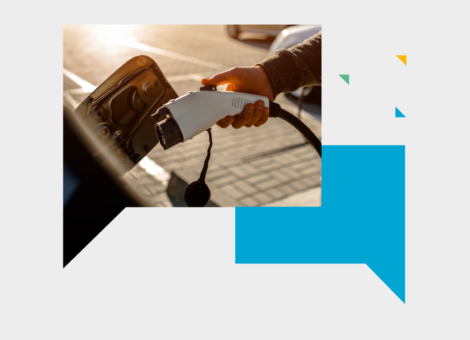Convenience is king: Are you adapting to the evolving retail environment?
The year of consolidated and commoditized convenience
More than ever, consumers are demanding convenience. And fuel retailers and petrol forecourts are stepping up to answer that demand. To do this, they have started to consolidate their services; Subway stores are popping-up inside SPARs on the forecourt, BP launched BPme to allow customers to pay in car, and taking it one step further, Asda and the Issa brothers have bet their whole business model on the idea that they could sell fuel and convenience in one place. In the US, 7-Eleven’s purchase of Speedway was yet another indication of the future where services are consolidated under one roof.
Moreover, as a result of COVID-19 people have shunned public transport and now rely predominately on their cars — and the comfort of travelling less and reduced time pressure during rush hour commutes will likely be a big reason why many people don’t turn back to public transport once the pandemic is over. For forecourt retailers, this represents an opportunity to position their business as a key shopping destination for drivers.
For some, forecourts will need to offer a place to sit; consumers won’t put up with having to wander around in a poorly lit filling station for 15 minutes. For others, it might mean building wider services on the forecourt, from refreshments to postal facilities and even remote working spaces. Ultimately, petrol stations will become a place where you can fill up your car, pick up an online delivery, and get a good quality evening meal.
Old business models are ending
There’s an unfortunate situation emerging for quick service restaurants such as Pret a Manger, Upper Crust, and many more. Put this in the context of consumers, and it begs the question, how can smaller, local business thrive in a world that faces such widespread economic upheaval?
According to Visa, 82% of consumers are worried about the future of their high street and as many as 61% admit they could personally do more to support small businesses by shopping locally, either in person or online. Small businesses must find a way to capture this sentiment and encourage people to visit town centres. Working from home will become the norm for most people so it will be down to local theatres, shows, restaurants, and bars to entice consumers back to the high street.
COVID-19 has taught us just how important small businesses are to our communities, and the importance of having a thriving local retail landscape. And smart local hospitality businesses was the perfect example of a sector that evolved by introducing new services like cocktail packages and online home delivery, to operate as close to “business as usual” as possible. This kind of innovation can only be improved upon if small businesses take a collaborative approach and underpin it with data. By doing this, and as more people consider the shift from metropolitan cities to suburban areas, businesses will be able to make better decisions in the future; monitoring product peaks, customers’ changing demands, and more will allow them to support communities despite the widespread disruption brought on by COVID-19.
Preparing retail forecourts to thrive in a post-COVID-19 world
At the height of the early COVID-19 pandemic, we saw consumers panic buying and stockpiling. However, most consumers shifted back to more regular shopping trips, buying groceries once a week, or once every two weeks. On top of this, many consumers are placing orders through online vendors such as Ocado and Hello Fresh — in fact, the latter saw its shares double this year.
Yet, this success for bigger grocers has not come at the expense of convenience retail. With fewer people travelling far from their homes, the purpose of the forecourt has the chance to change. As movement has been restricted and car journeys have shortened, forecourts must seize the opportunity to become local “hubs” for consumers, providing services such as quality takeaway dining, reliable Wi-Fi, and convenient day-to-day services such as Amazon lockers.
Forecourts are facing a bright future if they can use data to determine the offerings that will best suit their customer base and adapt in the right way to cater for those needs and wants.
As fuel pricing fluctuates new opportunities materialize for fuel retailers
After falling by a record 6.6 million barrels per day (mb/d) during the pandemic, the International Energy Agency (IEA) expects global oil demand to rebound as vaccine programmes roll out across several countries and the public resume their day-to-day travel. Yet retailers are still facing an uncertain landscape and will likely be unsure how to predict consumer behaviours that we’ll see post-pandemic. However, this can be an opportunity to adopt a data-driven approach, one that allows fuel retailers to be flexible and pivot to change quickly.
There has never been more data than right now, and fuel retailers have the opportunity to build a strategy that is responsive to market fluctuations, such as a change in lockdown measures that allow the public to travel to other cities; and the knock-on effect this would have on fuel demand and pricing.
What’s more, changes to routines and commuting patterns means customers have been forced to try new brands. As a result, some fuel vendors may find that their existing loyalty programmes aren’t enticing enough to convince commuters to choose them over a competitor. In this situation, fuel retailers must understand how fuel pricing influences drivers’ purchasing decisions. Using data to determine the “sweet spot” for the cost of fuel and exactly how to supplement this with deals and other offerings is the key to staying a step ahead of the competition.
Read more articles about:
UncategorizedSubscribe and get the latest updates
You may unsubscribe from our mailing list at any time. To understand how and why we process your data, please see our Privacy & Cookies Policy
Related posts
Uncategorized
How can fuel retailers adapt to a post-COVID-19 world?
Rich Wilcox, Vice President of Data Operations at Kalibrate shares his 2021 predictions for the fuel retail market.

Electric Vehicles
2021 predictions — fuel retail, data and analytics, and the future of EVs
Anila Siraj, Head of Data Strategy at Kalibrate, shares her 2020 trends on the fuel retail market, including how...

